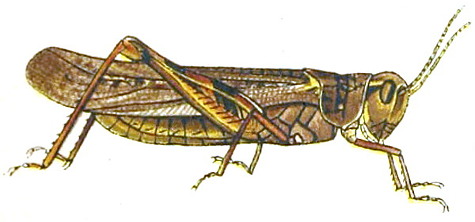
On June 15, 1875, physician Albert Childs was standing outside his office in Cedar Creek, Nebraska, when he saw the horizon darken. At first he was hopeful for some needed rain, but then he realized that the cloud was moving under its own power.
“And then suddenly it was on him, a trillion beating wings and biting jaws,” writes entomologist Steve Nicholls in Paradise Found (2009). It was an unusually huge swarm of Rocky Mountain locusts descended from the mountains. Stunned, Childs set about estimating its size:
Using the telegraph, he sent messages up and down the line and found the swarm front to be unbroken for 110 miles. With his telescope he estimated the swarm to be over half a mile deep, and he watched it pass for ‘five full days.’ He worked out that the locusts were traveling at around fifteen miles an hour and came up with the astonishing fact that the swarm was 1,800 miles long. This swarm covered 198,000 square miles, or, if it was transposed on to the east coast, it would have covered all the states of Connecticut, Delaware, Pennsylvania, Maryland, Maine, Massachusetts, New Jersey, New York, New Hampshire, Rhode Island, and Vermont.
“Albert Childs had recorded the largest ever swarm — the biggest aggregation of animals ever seen on planet Earth,” Nicholls writes. University of Wyoming entomologist Jeffrey Lockwood calls it the “Perfect Swarm.”
